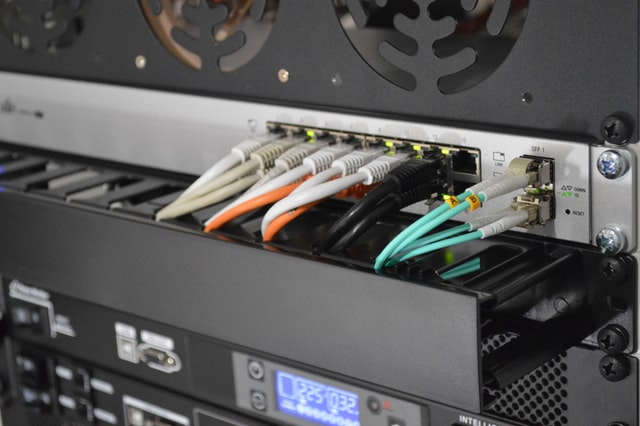Last year 2021, DDoS attacks targeted devices running Android and Linux systems. Attackers managed to find several vulnerabilities in the systems using a botnet and use them to mine cryptocurrency. They also infected thousands of network devices and overloaded hundreds of servers. This resulted in huge losses.
To protect your business from such attacks, you need to organize effective hosting security. There are different tools for security. If you want to reduce the risk of large financial losses, you need to use one of these tools.
What is a DDoS attack?
A DDoS attack is the deliberate damaging of a server by sending large amounts of data to it. As a result of such an attack, the server fails, its performance drops noticeably and ends up shutting down. And you, as a normal user, when you visit a site or an application, will see a message saying that the resource is unavailable.
Where are the huge data packets sent to the server from? From bots (special programs) that target specific tasks. They number in the millions. They can be located in different parts of the world. Attackers select the necessary bots and form a single system (botnet). Then they configure it to launch an attack.
At a certain point, the bots start sending garbage content to the server, which has no time to process it all due to limited capacity. This causes crashes, overloads, and errors. Companies around the world suffer huge losses every year because of such attacks.
Classification of DDoS attacks
When creating new computer networks (or upgrading old ones), compatibility problems may arise with different network devices. To avoid them, you need to use special standards. They are also called network models. They come in all shapes and sizes, but the TCP/IP and OSI models are considered the most popular. Their essence is to divide the network into layers.
There are seven network layers:
- Physical,
- link layer,
- networking,
- transport,
- session,
- representative,
- application.
DDoS attacks can happen at any of these levels. We will look at cyber attacks at levels 3-4 and 6-7.
Attack algorithm at layer 3-4 (infrastructures)
A synchronized flow is used, using TCP as an example (it’s used to transfer data from server to site and vice versa). Attackers form fake SYN packets with information and send them to the victim’s site in one moment.
Thousands of requests the server cannot process quickly, so a huge queue is formed of SYN packets that request a response. Such a queue clogs the information transmission channels and the site “crashes”.
Layer 4 overload is organized by multiple UPD mirror protocols. Responding to them, the server experiences heavy loads. Both described attack variants occur most often. They can last for a long time, but are quickly detected due to their characteristic signatures.
Attack algorithm on layer 6-7 (applications)
Occurs less frequently and is a more complex type of cyber-attack. Protecting a server/system from it is not easy. It is inferior to infrastructure type of overloads in terms of data transmission. The essence of the attack is to strongly impact the most valuable parts of the application so that it does not work.
What are the consequences? Excessive consumption of server resources. Systems are spontaneously rebooted or do not want to establish an SSL connection.

What are DDoS attacks for?
Such attacks on IT infrastructure are often orchestrated for the purpose of extortion. First, the attackers paralyze the main elements of the system, and then demand money to stop the attack.
And in order to motivate the company to pay more money, the criminals threaten to “take down” the created IT system completely.
However, there are other motives as well:
- Personal animosity and conflict. For example, in 1999, the FBI raided every known hacker in the country. In response, they staged an attack on the FBI’s main web sites and the latter were down for 2-3 weeks.
- Entertainment. Such a motive is more characteristic of beginner hackers and those who like to experiment in order to test their skills. Usually, they create a harmful, but not lasting, load on some not entirely legitimate resource.
- Staying ahead of the competition. Some companies are not willing to compete fairly. They fund hackers to orchestrate an attack on a competitor’s website or application.
- Distraction of IT specialists. Attackers organize a DDoS attack and, while the company’s specialists are trying to protect the system from it, conduct a completely different attack to cause maximum damage at the moment of vulnerability. This tactic is used by many hackers.
- Many people need protection against such cyber attacks – banks, clinics, MFIs, cryptocurrency exchanges, government agencies, gaming services (using gaming network solutions), online stores and other organizations.
- How can DDoS attacks damage businesses? It is important to emphasize here that the damage will not only be financial, but also reputational. A company’s customers may leave for a competitor if they do not receive a service or the opportunity to purchase a particular product at the time they need it.
- Not too long ago, a survey was conducted among the largest organizations that sell goods/services. They reported that their losses as a result of a DDoS attack were $20,000-25,000 (this is the average value). The amount does not include the cost of restoring the entire system.
What are the options for protecting against DDoS attacks?
- One of the most effective is filtering the data packets coming to your unique IP address. You can check the contents of these packets and prevent them from reaching the server by adding the sender to the blacklist. This frees up a backbone for transmitting secure data packets. Other methods of protection against DDoS attacks:
- Creating a virtual program that will automatically scrub the contents of data packets, removing malicious components from them and letting only safe information through.
- Reducing the number of points (zones) through which malicious communication is possible.
- Using a hosting service that can provide a large transit potential for the application or site. This will maintain access to the resource (for its users) even when malicious packets arrive on a large scale.
- Using a high-performance server that can handle large amounts of information.






Leave a Reply